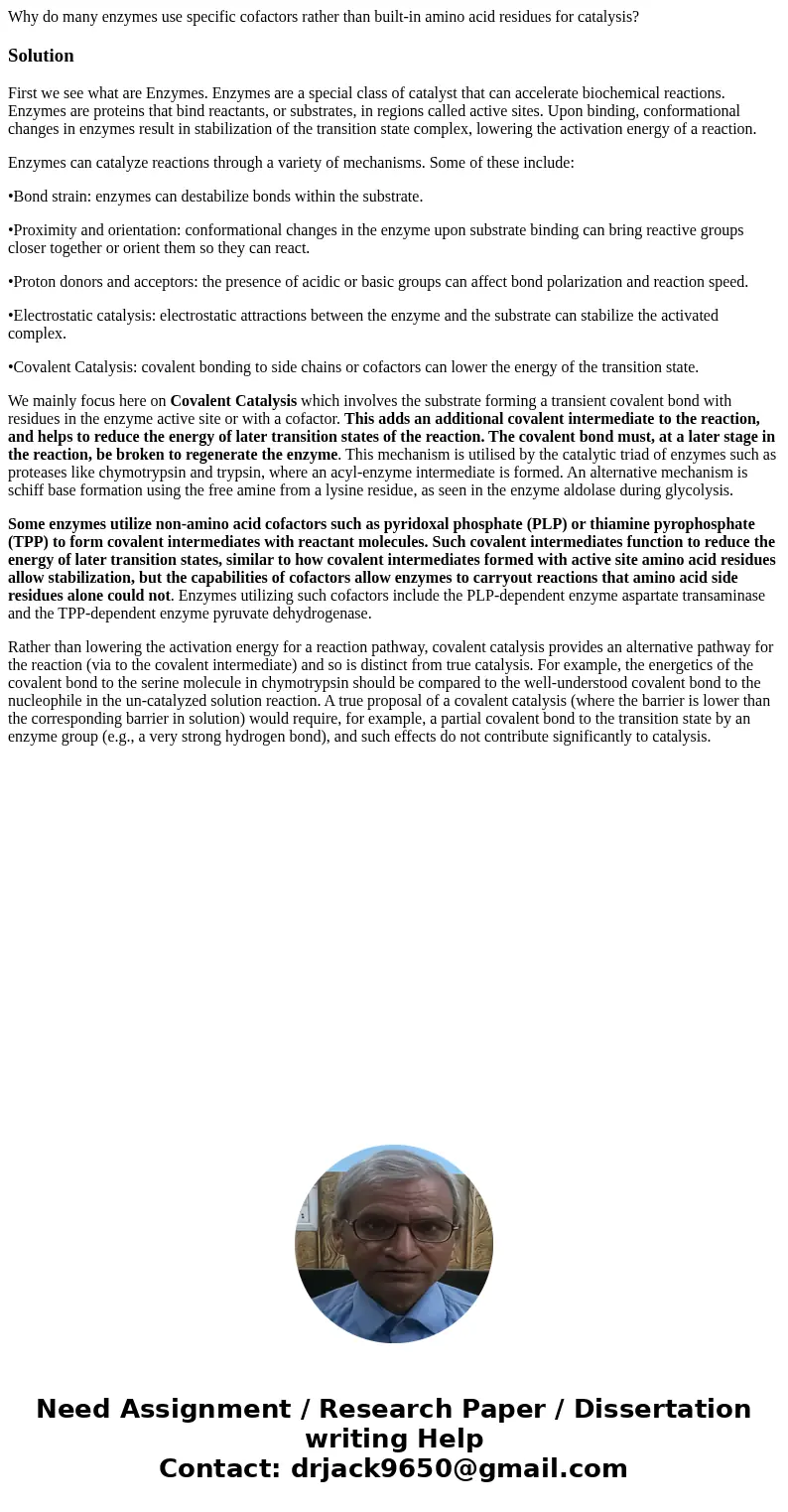Why do many enzymes use specific cofactors rather than built
Why do many enzymes use specific cofactors rather than built-in amino acid residues for catalysis?
Solution
First we see what are Enzymes. Enzymes are a special class of catalyst that can accelerate biochemical reactions. Enzymes are proteins that bind reactants, or substrates, in regions called active sites. Upon binding, conformational changes in enzymes result in stabilization of the transition state complex, lowering the activation energy of a reaction.
Enzymes can catalyze reactions through a variety of mechanisms. Some of these include:
•Bond strain: enzymes can destabilize bonds within the substrate.
•Proximity and orientation: conformational changes in the enzyme upon substrate binding can bring reactive groups closer together or orient them so they can react.
•Proton donors and acceptors: the presence of acidic or basic groups can affect bond polarization and reaction speed.
•Electrostatic catalysis: electrostatic attractions between the enzyme and the substrate can stabilize the activated complex.
•Covalent Catalysis: covalent bonding to side chains or cofactors can lower the energy of the transition state.
We mainly focus here on Covalent Catalysis which involves the substrate forming a transient covalent bond with residues in the enzyme active site or with a cofactor. This adds an additional covalent intermediate to the reaction, and helps to reduce the energy of later transition states of the reaction. The covalent bond must, at a later stage in the reaction, be broken to regenerate the enzyme. This mechanism is utilised by the catalytic triad of enzymes such as proteases like chymotrypsin and trypsin, where an acyl-enzyme intermediate is formed. An alternative mechanism is schiff base formation using the free amine from a lysine residue, as seen in the enzyme aldolase during glycolysis.
Some enzymes utilize non-amino acid cofactors such as pyridoxal phosphate (PLP) or thiamine pyrophosphate (TPP) to form covalent intermediates with reactant molecules. Such covalent intermediates function to reduce the energy of later transition states, similar to how covalent intermediates formed with active site amino acid residues allow stabilization, but the capabilities of cofactors allow enzymes to carryout reactions that amino acid side residues alone could not. Enzymes utilizing such cofactors include the PLP-dependent enzyme aspartate transaminase and the TPP-dependent enzyme pyruvate dehydrogenase.
Rather than lowering the activation energy for a reaction pathway, covalent catalysis provides an alternative pathway for the reaction (via to the covalent intermediate) and so is distinct from true catalysis. For example, the energetics of the covalent bond to the serine molecule in chymotrypsin should be compared to the well-understood covalent bond to the nucleophile in the un-catalyzed solution reaction. A true proposal of a covalent catalysis (where the barrier is lower than the corresponding barrier in solution) would require, for example, a partial covalent bond to the transition state by an enzyme group (e.g., a very strong hydrogen bond), and such effects do not contribute significantly to catalysis.

 Homework Sourse
Homework Sourse